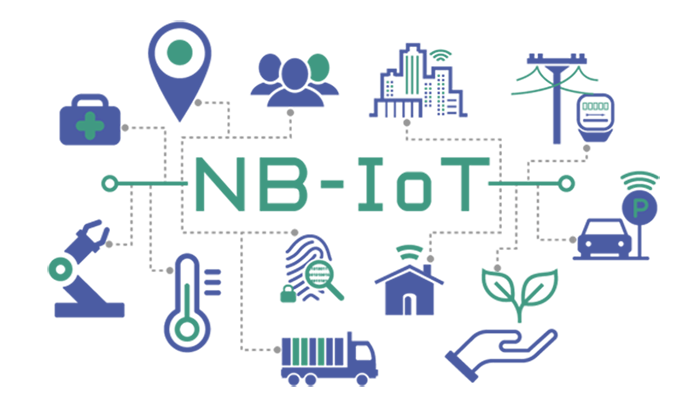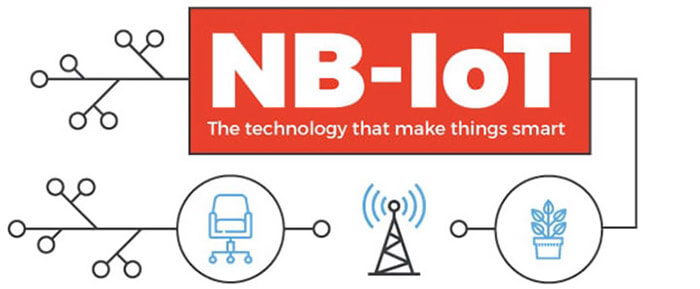Narrow Band Internet of Things concept and role

Narrow Band Internet of Things (NB-IoT) is an important branch of the Internet of Everything, also known as Narrowband-IoT.
Built on cellular networks, like Lora, is one of the technologies of Low Power Wide Area Networks (LPWAN), Narrow Band Internet of Things supports long standby times, consumes only about 180kHz of bandwidth, and can be deployed directly on GSM networks, UMTS networks, or LTE networks to reduce deployment costs and enable smooth upgrades.
Narrow Band Internet of Things (NB-IoT) requires efficient connectivity for high network connectivity devices. Narrow Band Internet of Things (NB-IoT) devices can increase battery life by at least 10 years, while also providing very comprehensive coverage of indoor cellular data connections.
The traditional internet caters to human-to-human communication, the IoT will further connect people to things and things to things. The essence of the IoT is based on the sensing, acquisition, and transmission of data, which can be through smart devices, monitoring devices, or through sensor-based physical terminals, such as city monitoring, smart homes, etc. These devices are connected to improve urban safety, greatly improve work efficiency and provide convenience for residents.
With the arrival of commercial 5G, the IoT will permeate all aspects of our work and life, creating great social value.
Narrow Band Internet of Things focuses on the low-power, wide-coverage (LPWA) Internet of Things (IoT) market and is an emerging technology that can be used on a global scale. It has features such as wide coverage, multiple connections, fast speed, low cost, low power consumption, and excellent architecture.
This allows it to be used in a wide range of vertical industries, such as remote meter reading, asset tracking, smart parking, smart agriculture, etc. The most successful case of using Narrow Band Internet of Things is the widely used bicycle-sharing before.
Moreover, the Narrow Band Internet of Things uses the License band and can be deployed in three ways, including in-band, protected band, or an independent carrier, to co-exist with existing networks.
A large number of future IoT applications will be the connection of such physical terminals, widely used in everyday life such as pet tracking, or in vertical industries such as industrial manufacturing and asset tracking.
A common feature of these applications is the need for a Low Power Wide Area Network (LPWAN), which should have the following characteristics.
Spectrum: use of licensed spectrum with good reliability and security
High coverage capability: able to reach basements, remote areas, etc.
Low power consumption of the terminal: battery power can support 10 years of life cycle
A large number of connections: 100K connections per cell
Low cost: low cost of communication modules
Transmission delay: insensitive to delay
Scalability: mobility, roaming, positioning, and other capabilities
Current cellular network technology cannot meet the demand of LPWAN well due to coverage, power consumption, and cost, Narrow Band Internet of Things (NB-IoT) technology was born. It has the features of wide coverage, more connections, low rate, low cost, less power consumption, and superior architecture. It can be said that NB-IoT is a technology that best meets the needs of LPWAN.
Narrow Band Internet of Things (NB-IoT) has four main features

First is wide coverage, which will provide improved indoor coverage. With the same frequency band, Narrow Band Internet of Things (NB-IoT) gains 20dB over the existing network, equivalent to a 100 times increase in the ability to cover the area.
Second is the ability to support connectivity, with NB-IoT capable of supporting 100,000 connections in one sector, supporting low latency sensitivity, ultra-low device costs, low device power consumption, and optimized network architecture.
Third, lower power consumption, with Narrow Band Internet of Things (NB-IoT) terminal modules capable of up to 10 years of standby time.
Fourth, lower module costs, with companies expecting no more than US$5 for a single connected module.
With the development of high technology such as 5G and IoT, future global IoT applications and devices will face a burgeoning growth, and many enterprises in China such as Huawei, ZTE, and many operators including carriers are carrying out Narrow Band Internet of Things (NB-IoT) and research. It is believed that Narrow Band Internet of Things (Narrowband IoT) will also usher in a broader space for development!
Besides the Narrow Band Internet of Things article, you may also be interested in the below articles.
4G vs 5G: What is the difference between 4G and 5G?
How to Choose the Best Antenna for Lora?
